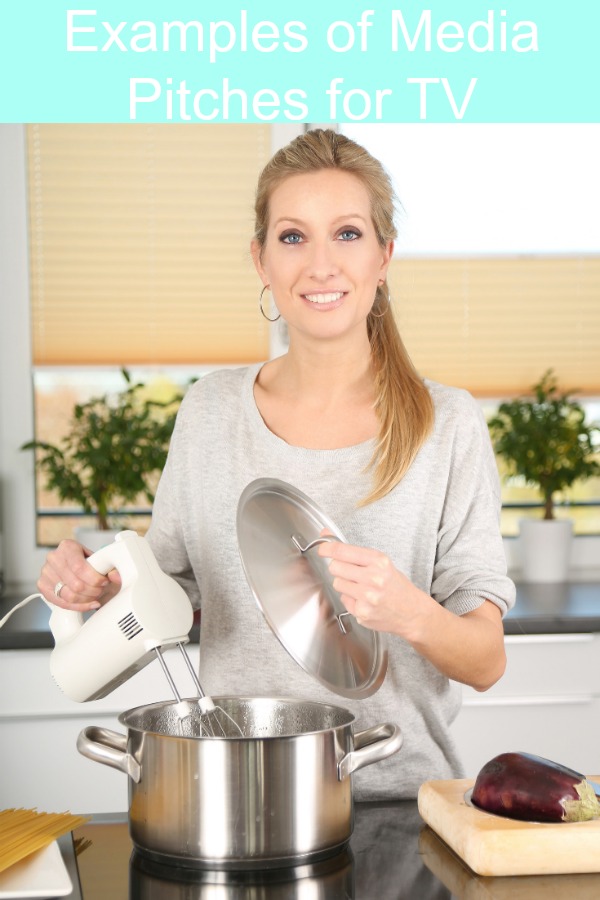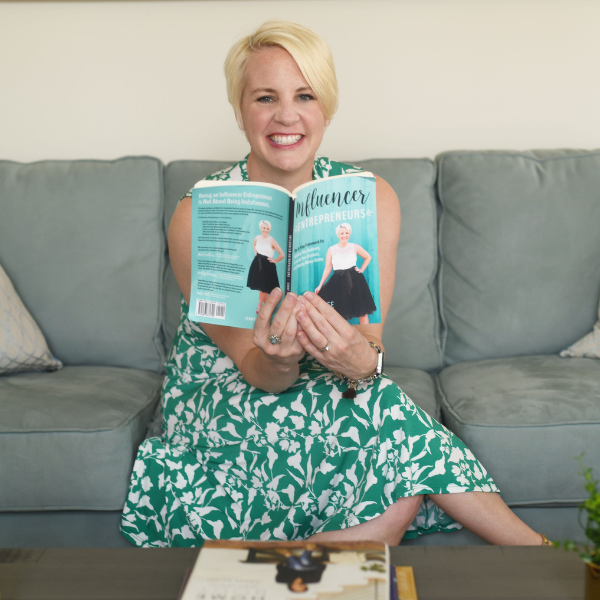A great way to get increased media exposure and traffic to your blog or social media channels is via a media pitch for television. Laura Saltman is giving specific examples of a media pitch for multiple niches so that you too can take advantage of the exposure.
IE 93: Examples of a Media Pitch for TV with Laura Saltman

I couldn’t be more excited about today’s guest, Laura Saltman. Laura has many years of experience working in the media, including television shows such as Access Hollywood, Today, and E! News. She is the author of 3 books and uses her experience working in media to get herself in front of the camera now instead of behind it.
I met Laura in person at Connect Her in Las Vegas this summer and I left feeling like I was meant to meet her. Laura talks a lot about pitching to the media through her experience of being pitched as a media person for so many years. As she says, “I was used to people asking me to put them on TV; now I pitch to be on TV!”
Benefits to Bloggers of Doing Local TV
As bloggers, I think we don’t often see the benefits of doing any type of local television appearances.
One thing Laura stresses is that local television doesn’t mean what it used to mean. Local no longer means local. If you are on a local channel, you can share the link to that segment on YouTube and Facebook and a website and before you know it, your little local appearance has gone international.
Don’t think of anything as small when it comes to any type of media. There is no such thing as small, local media anymore. Take advantage of any opportunity you get knowing that you have the chance to share it everywhere.
Who to Pitch in Local with a Media Pitch
I talk a lot about how to find the person you need to talk to when pitching brands but I asked Laura to talk about who to pitch when it comes to media.
Her advice is to always go after your niche. If you are a food blogger, look for cooking segments on local shows. If you are a health coach, you want the health segments. The more you stick to your niche, the more respect and opportunities you will get. Trying to go huge doesn’t mean you won’t get booked; it simply means you have more competition.
“It’s not hard to get media, it’s just a lot of work.”
You have to be prepared to do the work necessary to find the people you need to talk to. If you can hire someone to do the legwork for you, getting a list of podcasts or local shows and producers’ names to talk to, do it.
Key Components of a Media Pitch
Once you’ve got a list of people to talk to and you’ve prioritized the list, it’s time to put together a pitch.
The most important thing to know right up front is that you want your pitch to be as personal as you can make it. Anyone can put out a press release but they aren’t personal. You want to make a connection with the decision maker that makes them feel like they recognize something in you that the two of you share.
The best way to ensure this type of personal connection is to ask everybody you know if they know anybody in television or any kind of local media. Go to networking events in your area and meet people. You never know who knows somebody that you need to know.
Go to a television or radio station’s website and get the names of the producers or reporters and then follow them on social media. Find the person who is looking for experts in your niche. Laura stressed this point, that everybody in the media is looking for experts.
“If you have a blog, you are an expert.”
Producers would much rather be pitched and handed their content than to have to go out and find it. Laura remembers her days as a producer and how much she loved a great pitch. It didn’t matter how many followers the person had; if they were interesting or had a unique story, she was just happy to have them come to her.
And reach out to everybody. If you get on one show, reach out to more stations. You can really start to grow your reach by just one appearance.
What Is a Hook and How Do You Use It in a Media Pitch?
Your hook is your story idea and you want it to jump out at the person you are sending it to.
When Laura was in Las Vegas for the conference, she did a television spot for a local station where she knew a reporter. Her friend was happy to have her on but she still needed a hook because having a book out isn’t enough to get you on TV.
Laura decided to talk about how she spends her mornings and to make that theme even more solid, she was going to use breakfast language and even breakfast dishes. She had plates holding the 5 items she was using in her presentation.
The producer was satisfied and the segment went off without a hitch. You can even watch it here.
A great way to figure out a hook is to tie it to something, whether that’s a holiday or relating it to a larger story in the media.
*You guys, you have to listen to the episode because Laura shared sample hooks for several niches, like an Italian food blogger, a health coach for women over 40, and a family travel blogger. I think that hearing these will light a fire in you for ideas for your own hooks.
Using Media to Grow Your List
The whole point of going on local media is to grow your list and your following. Laura shared that going on a nationally televised program like the Today show can grow your following by thousands overnight. While local media may not be quite that effective, you should certainly be using it to tell people where to find you.
You need to be sure to share the link for your appearance on all your social media accounts and allow it to lead you to the next thing and the next thing after that.
Don’t feel like you have to say your website address or your social media handles repeatedly while you’re doing your segment. If you share valuable information with people that helps them, they will find you. That’s kind of the whole point of doing media spots, to get yourself in front of more people.
The Best Subject Lines for Media Pitches
Let’s face it, people’s inboxes are full. Nobody has time to go through tons of emails looking for the one that is different. You have to hook the person you need to talk to in the subject line or you can forget it.
Again, you need your email to jump out at them. It’s another place to throw in a hook. If you wouldn’t open the email based on your subject line, they aren’t going to either.
You want the person receiving the email to read your subject line and say to themselves, “Whoa. What is this about?” Don’t send an email with the subject line, “Hi, I would like to be on your show.”
What to Include with Your Media Pitch
When you send your media pitch, there are a few things you want to include. Always be sure to include your full name, a link to your website, and a link to a folder in Dropbox where you have a headshot and a picture of whatever you are pitching if that applies.
For example, if you are pitching a cooking segment, have a photo there of what the recipe looks like when it’s done. You don’t absolutely have to include video, but if you have any video experience, include a link to some that you’ve done. Producers need to know that you will be good on camera.
Be sure you are ready for television before trying to go on television! You can have an amazing hook but if you aren’t comfortable on camera, it isn’t going to go well.
Just remember that the media always need stories. Don’t ever feel bad about contacting producers or reporters. They need you and your expertise so reach out.
Action Steps:
- If you liked this episode of Influencer Entrepreneurs, please subscribe and leave a fabulous review!
- Mark your calendar for the weekly free trainings every Tuesday at 11am EST over on Jenny’s Facebook page.
- Join the conversation on Instagram by using the hashtag #WWJMD and tagging Jenny when you’re listening to the podcast. She’ll send you a personal message whenever you tag her.




